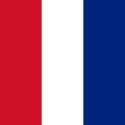RAF Coastal Command
| RAF Coastal Command | |
|---|---|
 Den tyske ubåd U-243 blev angrebet af Sunderlands 170 sømil fra Frankrig | |
| Grundlagt | 14. juli 1936 |
| Opløst | 28. november 1969 |
| Insignier | |
| National kokarde |  |
| Halefinne |  |
| Anvendt i Fjernøsten.. |  |
| ..1941-45 |  |
Coastal Command kontrollerede Royal Air Forces maritime flyvning og blev oprettet i 1936. Coastal Commands fly skulle dels beskytte egen søfart, som allierede og britiske konvojer og dels angribe både fjendtlige fly, overfladefartøjer og undervandsbåde. Maritime fly blev i høj grad negligeret i Storbritannien i mellemkrigstiden og grundet dette havde Coastal Command en dårlig udgangsposition ved udbruddet af 2. verdenskrig i 1939.
Oversat fra norsk Wikipedia.
Kilder/henvisninger
Medier brugt på denne side
Forfatter/Opretter: NiD.29, Licens: CC BY-SA 3.0
Used in India and far east to avoid use of red. Light blue is 50/50 mix of white and dark blue. Proportions are 1:1x2. Light blue is always to the front.
UK Royal Air Force fin flash
Royal Air Force Roundel
The German 500-ton U-boat U 243 being attacked by two Short Sunderland aircraft of No 10 Squadron, RAAF, some 170 nautical miles west of St Nazaire, France. The aircraft were "H", piloted by Flying Officer W.B. Tilley, and "K", piloted by Flight Lieutenant R.E. Cargeeg. Tilley, who made the initial attack, and scored hits, is credited with the sinking and was awarded the DFC. Sunk by depth charges, U 243 lost 11 dead and had 38 survivors. A dinghy and food-pack were dropped by Tilley for the survivors.
Roundel of the Royal Air Force in type B proportions and SEAC colours. Was used in India where red was replaced to avoid being misidentified as Japanese Hinomaru.




